
How A Texas Passive House Survived the 2021 Deep Freeze
Last Updated: Mar 29, 2025For about seven years, Trey Farmer and his wife Adrienne Lee Farmer lived in a ca. 1914 Craftsman-style bungalow a few miles west of downtown Austin. With a new baby in their lives, they decided they were ready to turn their drafty home with no subfloor or insulation into something that would be more comfortable and sustainable. Trey, a licensed architect with Forge Craft Architecture + Design and a certified Passive House consultant, and Adrienne, a designer, and stylist with Studio Ferme, came up with a plan for a Passive House retrofit.
Table of Contents
- The Build
- How Do Passive House Guidelines Apply In Texas?
- How Did The Passive House Weather The 2021 Texas Winter Storm?
- Proof of Concept

The Farmers wanted to retain as much of the structure of the 1,430-square foot home as they could, but the framing didn't meet code, and they discovered so much termite damage and wood rot that they had to rebuild the house in place essentially. They did so to Passive House standards. They moved out for 14 months and returned to their completed home in mid-February 2020.
One year later, Texas faced a massive cold spell, which caused power failures and outages that lasted for three days in many parts of the state. News stories featured homes with icicles hanging from ceiling fans; more than 4.5 million customers went without power. And dozens of people died because of the weather. The lost power debacle quickly became a political issue. Many critics incorrectly blamed green energy producers such as wind turbines, hydropower, and solar for the problems.
Could sustainable home building solutions have helped people facing this predicament? How did the Farmers' Passive House stand up to the extreme weather disaster?
The Build
The Farmers' house sits on a corner lot near a train line and is a block away from a major highway. Trey points out that there's a lot of research showing a correlation between detrimental health effects and people living so close to freeways and freight lines, likely due to the high amount of particulate matter in the air. "Indoor air quality was a big issue for us, and the house was uncomfortable. Really hot or really cold. We had a monster AC unit outside our window that would churn on and sound like a diesel engine. It was a beautiful old house, but it didn't feel like it was safe to have a child there." For all these reasons, the Farmers chose to go the passive house route.
Trey's mentor, architect Hugh Jefferson Randolph, collaborated on the early design phase with the Farmers.

They did not change the home's orientation, which runs east-west. They kept the original footprint and added 670 square feet onto the back. The house is now 2,100 square feet. The original façade and roofline were rebuilt, and all the detailing is the same. "[Doing this] made things easier with some of the permitting, and we wanted to keep the original charm and beauty of the Craftsman home," Trey says. The back of the house is contemporary, with a flat roof and big windows that take advantage of downtown views.

How Did the Build Reach Passive House Standards?
Features include:
- A 6,500 W solar panels on the roof's southern side
- Electric appliances
- Triple-pane windows
- R-30 (double the code) continuous insulation: the Farmers used Rockwool batts inside the house, and Zip System integrated sheathing (R-6) for the exterior.
- A heat pump water heater located in conditioned space, and
- An energy recovery ventilator (ERV)

How Do Passive House Guidelines Apply In Texas?
Passive House standards focus on energy use. "You add more insulation; windows are typically better than code. We have triple pane, and the code here is double pane," Trey says. "The big lift here is airtightness. This is the thing about passive house that is the most foreign in our market because it's not something we really have to think about here."
Because of Austin's climate zone, the codes for airtightness are low — five air changes per hour. "It's three changes in other parts of Texas and the rest of the country. In a Passive House, it's 0.6. Once you get down to 2 or 1, you get pretty big energy savings because you're not leaking air that's been heated or cooled."
At that level, you also don't have any dust, pollutants, or allergens coming in through nooks and crannies. "You get a big indoor air quality benefit."
The ERV continuously runs to bring in the fresh air that's filtered and tempered, so the Farmers aren't paying the energy penalty from Austin's typically hot, humid air. They also have a dedicated dehumidifier, which Trey says he specifies for all his Austin projects.
Passive House guidelines offer targets for heating and cooling demands during peak conditions and total annual demands. The targets vary based on the project type, size, and location. You model your house in 3D and arrange it on the site, including all of your window parameters, wall and roof assemblies, HVAC system, and appliances. That model tells you an assumption of how much energy your house will use and if you're meeting those targets.
Energy Saving Products for the Home
Shop home improvement products that help save and conserve energy (power) in your home.
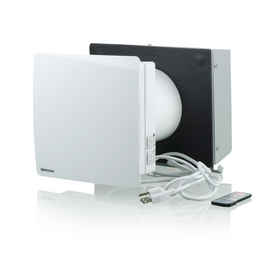
Vents TwinFresh Comfo RA1-50-2 Ductless Energy Recovery Ventilator
Vents
In Stock
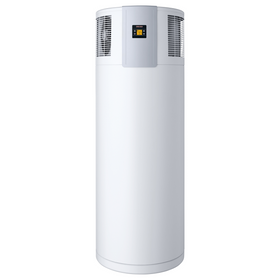
Stiebel Eltron Accelera 300 E Heat Pump Water Heater
Stiebel Eltron
In Stock
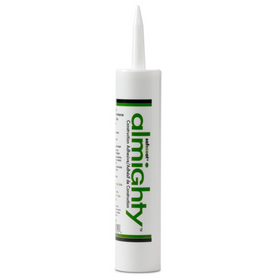
AFM Safecoat Almighty Adhesive Case of 12
AFM Safecoat
In Stock

Emporia Classic Level 2 48 AMP EV Charger UL Listed
Emporia
In Stock
2 Colors

Stiebel Eltron CON 300-2 Premium Wall-Mounted Convection Heater - 202030
Stiebel Eltron
Out of Stock
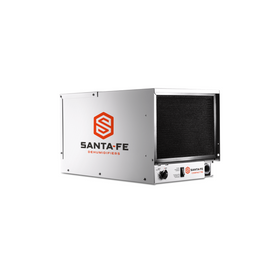
Santa Fe Compact70 Dehumidifier - 4044110
Santa Fe
In Stock
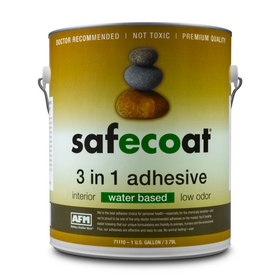
AFM Safecoat 3 in 1 Adhesive
AFM Safecoat
In Stock
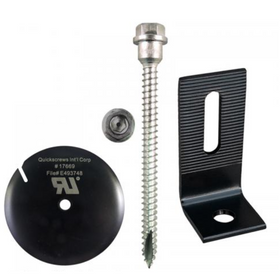
QuickBOLT QB2 with Microflashing Multi Roof Mount Solar Panel Fastener Kit
QuickBOLT
In Stock

Stiebel Eltron DHC-E 8/10-2 Plus Point-of-Use Electric Tankless Water Heater - 202145
Stiebel Eltron
In Stock
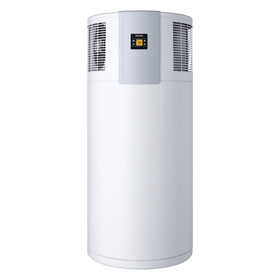
Stiebel Eltron Accelera 220 E Heat Pump Water Heater
Stiebel Eltron
In Stock

How Did The Passive House Weather The 2021 Texas Winter Storm?
In mid-February 2021, a polar vortex made it possible for multiple storms to track across the jet stream and devastate communities all across the United States. There were record low temperatures in Texas. One storm followed another, and the power demand was overwhelming. On Feb. 15, the Electric Reliability Council of Texas (ERCOT) began rotating power outages.
The Farmers have solar panels, "and the house is intended to be a little more than net zero," Trey says. But they don't have battery backup, which means that "when the grid goes down, we don't have power." If a home were to produce power and put current back into the system during a sanctioned outage, it could endanger the line workers. "If we had battery backup, we could likely power the battery if the grid was down. Our house would become an island, and we could draw from the battery."
There were three ice storms between February 11th and 20th. "It got to single digits on Sunday, Feb. 14 during the ice storm, which was when everything went sideways with our grid. They told us there would be rolling blackouts, and then our power went off for three days."
When the power was still on, the city of Austin had asked everyone to turn down the heat. The Farmers had set theirs at 68°F. Monday morning at 1:00 a.m., the power went out, and Trey said when he woke that morning, it was 9°F outside and 62°F inside.
At our neighbor's house, which was identical to ours [before the Passive House retrofit], it was 36°F. They may as well have been living in a tent.
Outdoor temperatures would be below freezing for a record 144 hours. The Farmers' house warmed up slightly during the day because of south-facing windows, but on the second night, it got down to 53°F inside. The following day the family went to stay with friends who still had power. "A neighbor checked on our place," Trey says.
The coldest our house got was 49 degrees on the third day. It was quite a bit warmer than many people's experiences.
Proof of Concept
A February 2020 Rocky Mountain Institute study, "Hours of Safety in Cold Weather: Framework for Considering Resilience in Building Envelope Design and Construction," looked at how long a home could maintain thresholds of comfort and safety before reaching unsafe indoor temperature levels. It found that "homes with Passive House standard building envelopes and net-zero energy buildings maintained safe indoor temperatures for significantly longer than even code-compliant new buildings, lasting over six days before indoor temperatures fell below 40°F."

How Did The Passive House Compare To Traditional Homes During the 2021 Texas Winter Storm?
Although it's only anecdotal, a recent Reddit thread compares three Austin homes, each of which lost power for more than 50 hours (the third house referenced is the Farmers'):
House 1: 800 square feet, built-in 1919 with single-pane windows, balloon framed, no insulation in the walls (although the blog poster had installed R-80 in the attic and R-20 in the floor). It dropped below 40F in a matter of five hours after losing power and would hover around 31F.
House 2: 2,300 square feet, 2009 code-built house, standard spray foam insulation, no attic, sealed crawl space. The blog poster confirmed with the owner that it dropped below 40F in 48 hours. "They could float in the 50s with their gas burners at full blast."
House 3: 2,100 square feet, built on the Passive House Institute (PHIUS) 2018 pilot standard. It never dropped below 49F.
Trey monitors his home using AirThings, which keeps track of temperature; humidity; indoor air quality, including carbon dioxide levels, radon, VOCs, and particulate matter.

The Pros and Cons of Their All Electric Home
Because their home is all-electric, the Farmers couldn't even use the stove. Trey says that many people he knew kept their houses warm by boiling water on their gas stoves. There are trade-offs with everything, and hospitals reported more than 300 carbon monoxide poisoning cases in Houston alone.
Why Is Locating Your Water Heater Inside, Even in the South, Important?
The Farmers have an 80-gallon heat pump hot water heater located in conditioned attic space. Trey points out that locating a water heater indoors isn't common in Texas. "It's more expensive to put inside because you have to use precious square footage." Ultimately, many of the outdoor tanks exploded when the power went out. "Water froze and popped the tanks. Once the power came back, people still couldn't get hot water because plumbers couldn't get the parts necessary to fix the broken tanks." Trey reports that the water at his house was still hot (90°) two days into the power outage. "And it didn't explode."

How Was Air Quality Affected in the Passive House During the Texas Winter Storm?
During the first night with no power, Trey, Adrienne, their toddler, and their 70-pound dog all slept in the bedroom behind a closed door. Trey tracked carbon dioxide levels. Typically, carbon dioxide is not a problem, but although it's a rare occurrence, high carbon dioxide levels can be dangerous. “We got up to 3,270 ppbl; OSHA limit is 5,000 ppbl.” Trey says. To put it in perspective, he says that flying in a plane is regularly about 3,000 ppb.
Trey wasn't worried. "The house is normally at 500 to 700 so getting up over 3K was a lot but that was only in the bedroom; the rest of the house never got above 1200 and knowing we were still way below anything that was actually dangerous was helpful," he says. "We could have let in more outdoor air, but it was so cold." He wonders what levels other houses are usually and in closed bedrooms, where they don't have ERVs so aren't getting fresh air. "But not many people are monitoring these things in their homes."
Trey believes that overall, his house "performed well. It was a good case study and proof of concept from a passive survivability standpoint."
Here's the crew that helped create the Farmers' house:
Contractor – CleanTag LLC
Structural Engineer – Lester Germanio
Mechanical Design – Positive Energy
Mechanical Installation – New Results
Landscape – Austin Outdoor Design
Stacey Freed
I’m constantly on the hunt for a way to hike and write simultaneously.

